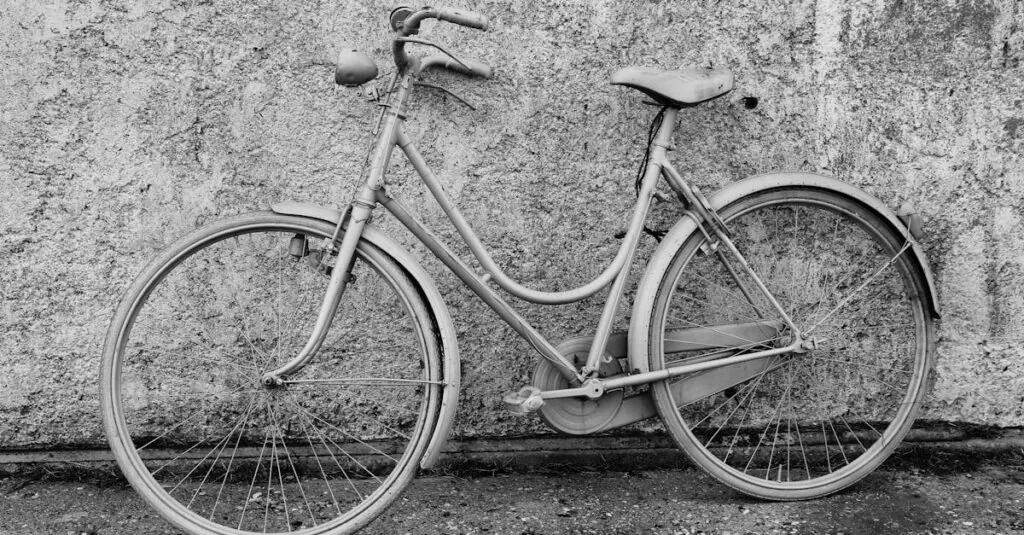Every closet has a story, but let’s be honest—most of them are more horror than fairy tale. With clothes piled high and shoes playing hide and seek, it’s time for a closet update cycle that’ll transform that chaotic wardrobe into a stylish sanctuary. Who wouldn’t want to swap out last season’s ‘what was I thinking?’ for chic pieces that spark joy?
Table of Contents
ToggleUnderstanding Closet Update Cycle
The closet update cycle involves periodic reviews and refreshes of wardrobe contents. This process ensures that clothing remains stylish and functional.
Definition of Closet Update Cycle
The closet update cycle refers to the regular intervals at which individuals assess and modify their clothing collections. Updates typically occur with seasonal changes, major life events, or shifts in personal style. Each cycle includes removing items that no longer serve a purpose, organizing remaining pieces, and integrating new additions that enhance overall wardrobe coherence.
Importance of Regular Updates
Regular updates maintain a functional and appealing closet. A fresh wardrobe fosters confidence and motivates individuals to explore new styles. Keeping clothes relevant eliminates clutter and simplifies decision-making during outfit selection. Research shows an organized wardrobe saves time, often improving daily routines. Additionally, updates allow for the inclusion of sustainable fashion choices, supporting eco-conscious consumerism. Engaging in this routine promotes a vibrant wardrobe that reflects current trends and personal identity.
Signs You Need a Closet Update
Recognizing when a closet update is necessary can enhance wardrobe functionality and style. Look for these key indicators.
Outdated Fashion Trends
Clothing styles evolve rapidly. When garments reflect past trends rather than current ones, it’s time for an update. Fashion from two or more seasons ago might not align with today’s styles. If pieces remain unworn for over a year, consider letting them go. Unflattering fits or styles no longer matching personal preferences often signal a need for change. Outdated items can clutter valuable space, so prioritize updating with fresh, contemporary choices that enhance the wardrobe.
Seasonal Clothing Changes
Seasonal transitions often require a significant wardrobe re-evaluation. As temperatures shift, swapping summer attire for winter clothing becomes essential. If winter coats take up more space than light jackets, this indicates the necessity for organization. Organizing clothing by season helps maintain accessibility and aligns outfits with current weather conditions. Additionally, incorporating seasonal trends can revitalize a wardrobe. Emphasizing versatility with transitional pieces creates a more functional closet that accommodates changing climates effectively.
Planning Your Closet Update
Planning a closet update involves thoughtful steps to ensure maximum efficiency. This process begins with evaluating the current wardrobe contents to determine what to keep, donate, or discard.
Assessing Your Current Wardrobe
Assessing the wardrobe starts with a comprehensive review of each item. Identify clothes that haven’t been worn in over a year or those that no longer mirror personal style. Consider taking inventory of seasonal pieces to optimize organization. Evaluate fit and comfort since garments should enhance daily life. Multi-seasonal pieces can also be highlighted for their versatility. Discard items that don’t align with current fashion or that evoke negative feelings. This assessment streamlines the closet and allows for a more focused approach during updates.
Setting a Budget
Setting a budget creates a framework for the update process. Determine how much to allocate for new additions without overspending. Consider pricing trends for essential wardrobe pieces, such as basic tops or versatile outerwear. It’s important to differentiate between high-quality investments and less costly items, prioritizing value over quantity. Incorporate room for unexpected expenses, since trendy items may arise throughout the season. Additionally, budget for sustainable options, as eco-friendly clothing promotes responsible consumer choices. Keeping track of expenditures aids in maintaining financial discipline during wardrobe refreshes.
Tips for an Effective Update
Maximizing closet efficiency involves strategic updates. Emphasizing organization and practicality enhances personal style and functionality.
Decluttering Techniques
Identify clothing that no longer fits or aligns with current preferences. Categorize garments into keep, donate, and discard piles for an efficient process. Utilize the one-year rule; any item unworn in that timeframe likely won’t be worn again. Consider a capsule wardrobe approach, focusing on versatile pieces that mix and match easily. Enlist a friend for a fresh perspective, offering encouragement and accountability during the decluttering journey. Stay mindful of emotional attachments and prioritize garments that genuinely add value.
Adding Essential Pieces
Incorporate staples that enhance wardrobe versatility. Look for quality basics such as tailored blazers, classic denim, and essential layering pieces. Prioritize sustainable brands and timeless styles to align with personal ethics and comfort. Select accessories that elevate outfits, like scarves, belts, and statement shoes. Focus on seasonally appropriate additions to maintain balance with existing clothing. Embrace current trends by including one or two trendy items that resonate with personal taste while avoiding over-cluttering. Spaces should inspire confidence and creativity, reflecting both functionality and individuality.
Sustainable Closet Update Practices
Sustainable practices during a closet update promote environmentally friendly fashion choices. Incorporating these methods enhances both style and responsibility.
Thrifting and Upcycling
Thrifting offers a unique way to refresh a wardrobe without contributing to waste. Shoppers often discover one-of-a-kind pieces at thrift stores, making every find a potential style statement. Upcycling adds another layer of sustainability, allowing individuals to transform outdated items into trendy, personalized clothing. Creative projects, like turning long jeans into stylish shorts or redecorating worn-out jackets, breathe new life into garments. Local workshops sometimes host upcycling events, providing opportunities to learn new skills. Embracing these options not only benefits the environment but also fuels creativity and individual style.
Donations and Recycling
Donating unused clothing supports those in need while reducing waste. Various organizations accept gently worn items, ensuring they’re distributed to individuals who can benefit from them. Clothing drives often take place in communities, encouraging participation and awareness. Recycling is another critical component; textiles can break down and create new materials instead of clogging landfills. Many brands offer take-back programs, incentivizing consumers to return old garments. Engaging in these methods fosters a culture of sustainability, promoting responsible consumerism and contributing to a healthier planet.
A closet update cycle is vital for maintaining a stylish and functional wardrobe. By regularly assessing and refreshing clothing collections, individuals can ensure their closets align with personal style and current trends. This proactive approach not only simplifies daily outfit choices but also fosters confidence and promotes sustainable fashion practices.
Engaging in seasonal transitions and mindful decluttering creates an organized space that reflects individuality. By incorporating sustainable practices like thrifting and upcycling, readers can refresh their wardrobes while contributing positively to the environment. Embracing the closet update cycle leads to a more joyful and efficient dressing experience, making it easier to express personal style every day.




